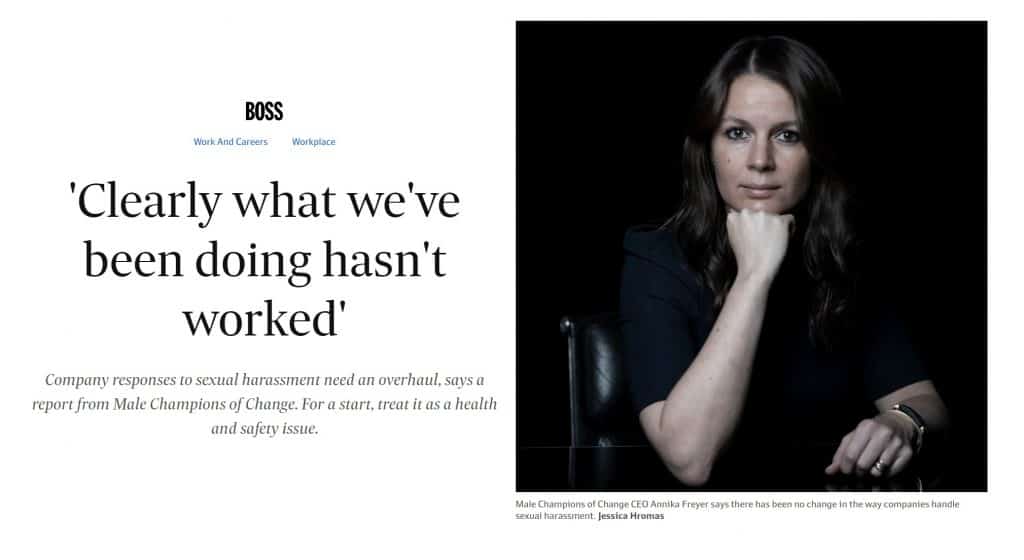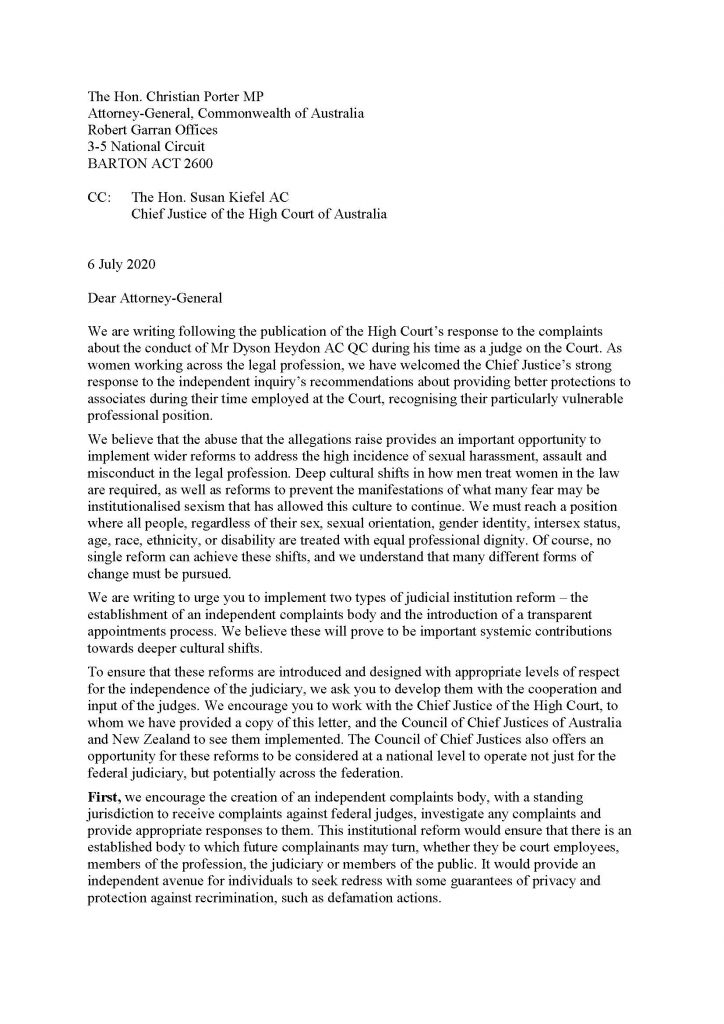
If prominent Australian lawyer, Josh Bornstein does not like something, it’s worth looking more closely at it. Last week on Twitter, Bornstein scoffed at the suggestion that occupational health and safety (OHS) could be a new approach to preventing sexual harassment in the workplace. He tweeted:
“To all those clamouring to support the idea that sexual harassment should be treated as an OHS issue, I have a simple message: Wrong Way, Go Back”
The OHS and sexual harassment nexus appeared primarily in response to a couple of articles (paywalled) in the Australian Financial Review (AFR) based on a leaked report from the Male Champions for Change (MCOC) organisation. Although the report is not publicly released for another couple of weeks, MCOC (hopefully not pronounced My Cock), proposes consideration of applying OHS laws and principles to sexual harassment.
The full report is likely to discuss the mechanics of this further but the advocacy of OHS is less interesting that the admission that MCOC and other leadership-based approaches to reduction and prevention of workplace sexual harassment have failed.






